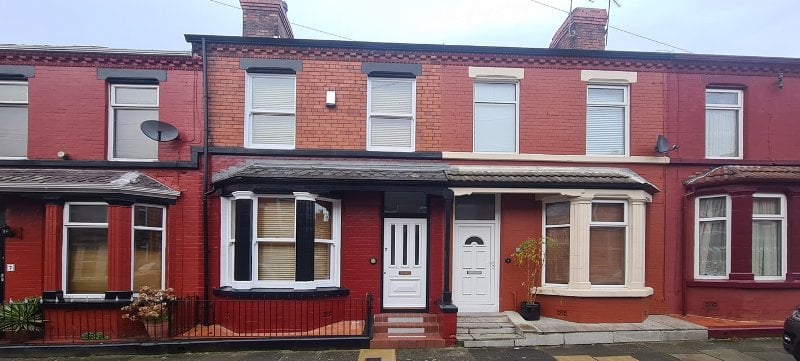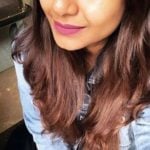John Lennon Height, Age, Death, Wife, Children, Family, Biography
| Bio/Wiki | |
|---|---|
| Birth Name | John Winston Lennon |
| Full Name | John Winston Ono Lennon |
| Nickname(s) | • Kenny • Dr Winston • O'Boogie • The Reverned Fred • Mel Torment • Beatle • John Ono Lennon |
| Profession(s) | • Singer • Songwriter • Musician • Actor • Activist • Author |
| Famous Role | 'Gripweed' in the film How I Won the War (1967) |
| Physical Stats | |
| Height (approx.) | 5' 10" (178 cm) |
| Eye Colour | Brown |
| Hair Colour | Brown |
| Career | |
| Debut | Album (Band): 'Please Please Me' by The Beatles (1963) Film: A Hard Day's Night (1964) 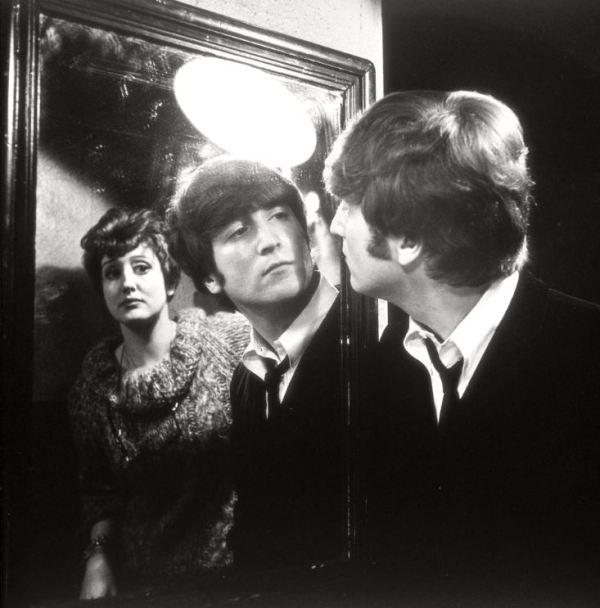 TV: Not Only... But Also (1965) as a lavatory attendant and guest  Song (Solo): Give Peace a Chance (1969)  Album (Solo): Double Fantasy (1980) 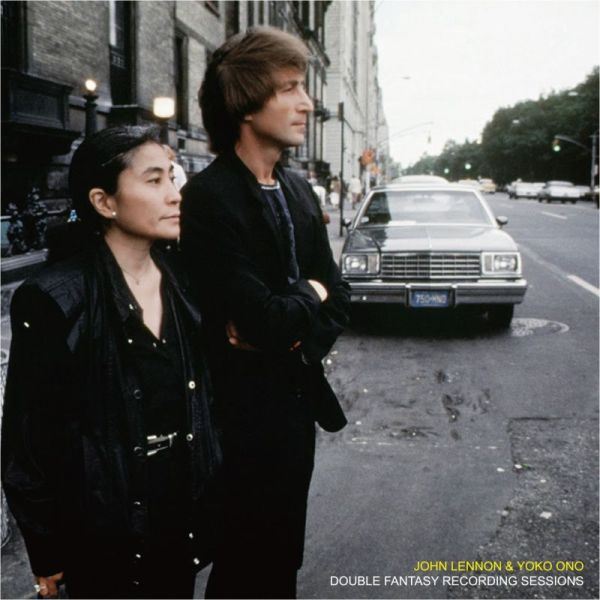 |
| Last Project(s) | Song(s) • Band: Now and Then by The Beatles (1973)  • Solo: Walking on Thin Ice (1980)  |
| Awards, Honours, Achievements | 1965: Appointed Members of the Order of the British Empire (MBE) in the Queen's Birthday Honours 1965: Best New Artist and Best Performance by a Vocal Group (for A Hard Day's Night) awards at the 7th Grammy Awards 1967: Song of the Year award for 'Michelle' at the 9th Grammy Awards 1968: Best Contemporary Album and Album of the Year awards for 'Sgt. Pepper's Lonely Hearts Club Band' at the 10th Grammy Awards 1971: Best Music, Original Song Score Award (shared with The Beatles) for 'Let it Be' at the 43rd Academy Awards 1971: Best Original Score Written for a Motion Picture or a Television Special Award 'Let it Be' at the 13th Grammy Awards 1977: British Pop Album, Outstanding Contributions to the Recording Industry, and British Pop Group awards at the BRIT Awards 1982: Album of the Year Award for 'Double Fantasy' at the 24th Grammy Awards 1982: BRIT Award for Outstanding Contribution to Music 1983: BRIT Award for Outstanding Contribution to Music 1988: BMI TV Music Award for 'The Wonder Years' at the BMI Film & TV Awards 1988: Star on the Hollywood Walk of Fame (posthumously) 1989: BMI TV Music Award for 'The Wonder Years' at the BMI Film & TV Awards 1990: BMI TV Music Award for 'The Wonder Years' at the BMI Film & TV Awards 1991: Lifetime Achievement Award (posthumously) at the 33rd Grammy Awards 1994: BMI TV Music Award for 'Grace Under Fire' at the BMI Film & TV Awards 1995: BMI TV Music Award for 'Grace Under Fire' at the BMI Film & TV Awards 1996: BMI TV Music Award for 'Grace Under Fire' at the BMI Film & TV Awards 1999: BMI TV Music Award for 'Providence' at the BMI Film & TV Awards 1999: Best Music - Adapted Song award for 'Across the Universe' at the Online Film & Television Association Awards 2000: BMI TV Music Award for 'Providence' at the BMI Film & TV Awards 2002: BMI TV Music Award for 'Providence' at the BMI Film & TV Awards 2003: BMI TV Music Award for 'Providence' at the BMI Film & TV Awards 2008: Best Music - Adapted Song Across the Universe award for 'I Want to Hold Your Hand' at the Online Film & Television Association Awards |
| Personal Life | |
| Date of Birth | 9 October 1940 (Wednesday) |
| Birthplace | Liverpool, England |
| Date of Death | 8 December 1980 |
| Place of Death | New York City, USA |
| Age (at the time of death) | 40 Years |
| Death Cause | Murder |
| Zodiac sign | Libra |
| Autograph |  |
| Nationality | British |
| Hometown | Liverpool |
| School | • Dovedale Primary School, Liverpool • Quarry Bank High School (now Calderstones School), Liverpool (September 1952 - 1957) |
| College/University | Liverpool College of Art |
| Educational Qualification | High School Graduate |
| Religion | Individuality (briefly converted to Christianity) |
| Ethnicity | Irish |
| Blood Group | O |
| Food Habit | Non-vegetarian |
| Hobbies | Playing Monoply |
| Controversies | "More Popular than Jesus": In March 1966, John Lennon sparked significant controversy when he claimed that The Beatles were "more popular than Jesus." He said, Christianity will go. It will vanish and shrink ... We're more popular than Jesus now – I don't know which will go first, rock and roll or Christianity." This statement, made during an interview, angered many religious groups, particularly in the United States, where it led to public outrage, record burnings, and protests against the band. [1]Rolling Stone Lennon vs Wooler: In 1967, John Lennon physically attacked DJ Bob Wooler after Wooler made fun of him and entrepreneur Brian Epstein, suggesting they had a homosexual encounter. The incident occurred after Wooler attended singer Paul McCartney's 21st birthday party in Spain. Following the attack, Wooler needed medical help, but Lennon avoided legal consequences by paying him a large sum of money. The Abusive Behaviour: Lennon once stirred controversy due to being abusive towards his first wife, Cynthia. He once admitted that hit her out of jealousy and acted violently during their marriage. Their relationship got worse after he started seeing Yoko Ono. When he and Cynthia divorced in 1968, he publicly blamed her for their split and claimed she was unfaithful, which went against his image as a peace activist. The Beatles' Breakup: Lennon faced backlash for his relationship with Yoko Ono, a Japanese multimedia artist and singer, which some fans blamed for the breakup of The Beatles in 1970. This perception sparked controversies, as many believed her influence changed the band's dynamics and led to their disbandment. Allegations of Atheism: In 1971, Lennon faced backlash for his song 'Imagine,' which many critics accused of promoting atheism by envisioning a world without religion. This idea upset religious groups and sparked debate about the song's theme, although many people saw it as a message for peace. Anti-War Activism and Deportation Attempts: Lennon's political activism peaked in the early 1970s when he joined anti-war protests, especially with his song 'Give Peace a Chance.' His strong criticism of the Vietnam War worried US President Richard Nixon's administration, which led to the FBI launching a surveillance campaign against him because they feared he could influence young people to oppose the war and support the counterculture movement. In 1972, he faced a deportation order, which he fought for several years. [2]uDiscover Music 'Woman is the Nigger of the World' Comment: In 1972, John Lennon used the phrase "woman is the nigger of the world" during a discussion about women's rights in an interview. This comment caused massive backlash for its racist undertones and was criticised by many activists and feminists. |
| Social Media | • Instagram • YouTube • Official Website |
| Relationships & More | |
| Marital Status (at the time of death) | Married |
| Affairs/Girlfriends | Alma Cogan (singer) |
| Marriage Date | First Marriage: 23 August 1962 Second Marriage: 20 March 1969  |
| Marriage Place | First Marriage: Mount Pleasant Registry Office, Liverpool Second Marriage: Gibraltar |
| Family | |
| Wife/Spouse | • Cynthia Lennon (artist, author) (deceased) (m. 1962; div. 1968) • Yoko Ono (multimedia artist, singer) (m. 1969; till his death in 1980)  |
| Children | Son(s)- 2 • Julian Lennon (musician, photographer) (from first marriage)  • Sean Lennon (musician, songwriter, producer) (from second marriage)  Daughter- None |
| Parents | Father- Alfred Lennon (seaman, singer) (deceased) Mother- Julia Lennon aka Julia Stanley (waitress) (deceased)  |
| Siblings | Half-Brother(s)- 2 • David Lennon • Robert Lennon 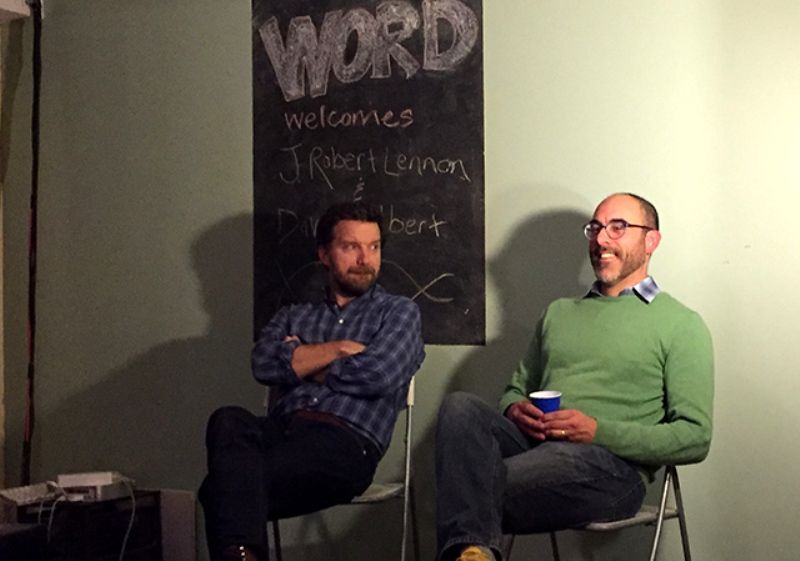 Half-Sister(s)- 3 • Julia Baird aka Julia Dykins (author, retired teacher) 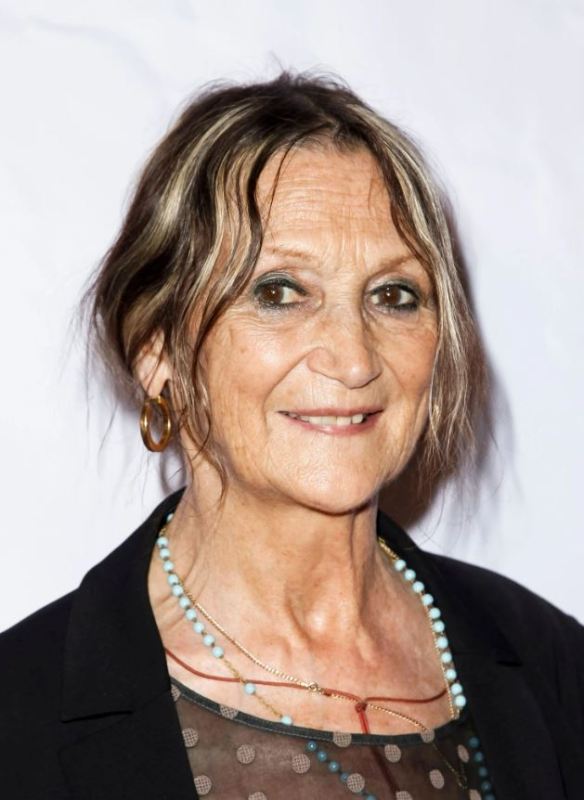 • Ingrid Pedersen (aviator) (deceased)  • Jacqueline Dykins  |
| Other Relatives | Aunt- Mimi Smith |
| Favourites | |
| Food | Cornflakes |
| Colour | Green |
| Style Quotient | |
| Car Collection | • Rolls Royce (bought in June 1964) • Ferrari 330 GT Series 1  • Rolls-Royce Phantom V (bought in June 1965) • Radford Mini  • Ferrari • Mercedes-Benz 230SL (GGP 196C) (bought in August 1965)  • Rolls Royce Phantom V (EUC 100C) • Mercedes-Benz 600 Pullman (BPH 600H) (bought in February 1970) 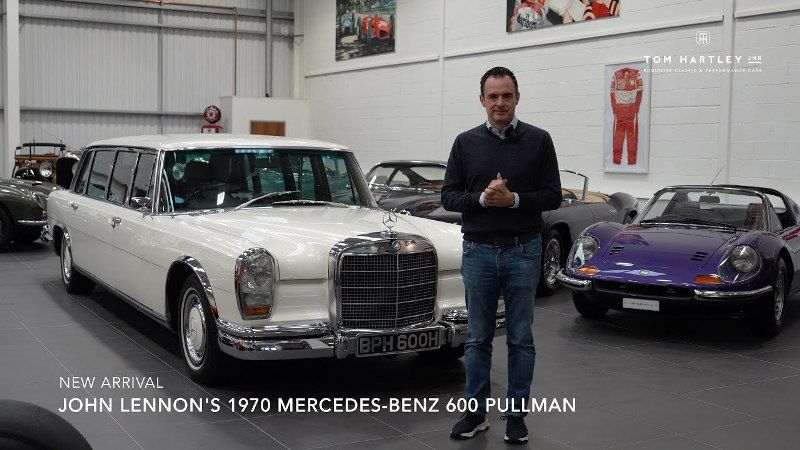 • Chrysler Town & Country (replace by Mercedes 300 TD Estate in 1979) |
| Bike Collection | 1969 Honda Monkey Trail Z50 A |
| Money Factor | |
| Salary/Income (approx.) | $60 Million per annum (as of 1980) |
| Assets/Properties | • Tittenhurst Park in Sunningdale (worth £145,000) (bought in 1969) (sold to musician Ringo Starr for £5 million in 1973) • The Dakota, New York City (worth approx. $1.5 million) (bought in 1973; lived there until his death in 1980) • Kenwood, Weybridge, Surrey (worth £20,000) (bought in 1964) (sold for £40,000 in 1968 after his divorce from Cynthia Lennon) • A mansion in Palm Beach, Florida (worth $7.25 million) (bought in 1980) (Yoko Ono sold it for $36 million in 2020) |
| Net Worth (approx.) | $900 million (as of 1980) |
Some Lesser Known Facts About John Lennon
- John Lennon was born at Liverpool Maternity Hospital and was the only child of his parents. His father, a merchant seaman, was not there when John was born.
- He was named ‘John Winston Lennon’ after his paternal grandfather, John ‘Jack’ Lennon, and Winston Churchill, the Prime Minister of the United Kingdom.
- His father used to be the mascot for his school’s soccer team.
- Lennon was once expelled from Sunday School for calling the Scribes and Pharisees in the Bible “Fascists.”
- John’s father was often away from home and sent money to the family at 9 Newcastle Road in Liverpool. However, the money stopped when he went missing for six months after leaving without permission in February 1944.
- When John’s father finally came back, he wanted to leave the job and take care of the family, but his wife Julia said no because she was pregnant with another man’s child.
- John’s mother Julia was struggling to care for him because she was alone and pregnant. Her sister Mini noticed this and told Liverpool’s Social Services about the situation. As a result, Mimi was given custody of John Lennon.
- In July 1946, his father visited Julia and took five-year-old John to Blackpool, planning to secretly move to New Zealand with him. Julia, however, later followed them with her partner John Dykins, a wine steward.
- During many arguments, John was forced to choose between his parents. He initially chose his father but then ran after his mother when she walked away in tears. After this, Lennon did not see his father for almost 20 years.
- According to historian and biographer Mark Lewisohn, Lennon’s parents agreed Julia should raise him. Witness Billy Hall once said that the story of young John having to choose between his parents is inaccurate.
- Lennon spent the rest of his childhood and teenage years living with his aunt Mimi and her husband, George Smith, at Mendips, 251 Menlove Avenue, in Woolton; they had no children of their own.
- His aunt used to buy him storybooks, and his uncle would give him a mouth organ and crossword puzzles to solve. John often visited his mother, Julia, who used to play Elvis Presley records and teach him the banjo, including songs like ‘Ain’t That a Shame’ by Fats Domino.
- One day, Lennon was playing the mouth organ on a bus, and the driver was impressed. The driver later gave him an unclaimed harmonica, which replaced his old toy. Lennon was also skilled at playing various types of guitars and the piano.
- John was initially embarrassed to wear glasses and would avoid them, even if it meant being half-blind. Inspired by singer and songwriter Buddy Holly, he eventually asked his aunt to get him a pair. Later, he was also diagnosed with dyslexia.
- Lennon often visited his cousin Stanley Parkes in Fleetwood as a kid. During school holidays, they would take trips to Blackpool with their other cousin, Leila Harvey, to see shows at the Blackpool Tower Circus. Lennon loved watching actor George Formby’s work.
- John Lennon grew up as an Anglican. After completing his 11th class at Dovedale Primary School, he attended Quarry Bank High School (now Calderstones School) in Liverpool.
- In school, Lennon was often in trouble for fighting, bullying, and causing disruptions. He was good at making people laugh and was known as the ‘class clown.’ He also enjoyed drawing cartoons, which were featured in his school magazine, ‘The Daily Howl.’
- Lennon’s behaviour changed during his senior year at Quarry Bank High School. Teachers noted that he had “too many wrong ambitions” and that he often “drifted” instead of using his abilities. His misbehaviour also caused tension with his aunt.
- His school reports generally included remarks like, “Certainly on the road to failure … hopeless … rather a clown in class … wasting other pupils’ time.”
- Lennon did not pass his O-level exams, but with help from his aunt and headmaster, he got accepted into the Liverpool College of Art.
- At college, he started wearing Teddy Boys’ clothes and often got into trouble for his behaviour, which nearly got him expelled. Cynthia Powell, a classmate who later married him, once said he was kicked out before finishing his last year.
- Cynthia was initially unsure about Lennon’s personality and style. She had heard that he was a big fan of the French actress Brigitte Bardot, so she dyed her hair blonde to look more like her.
- While in college, Lennon punched a guy because he asked John’s then-girlfriend Cynthia Powell to dance with him.
- John was often jealous and became more possessive over time. During their relationship, he once hit Cynthia after seeing her dance with Stuart Sutcliffe. She broke up with him, but they patched up three months later when John apologised and asked to reunite.
- John once wanted his wife Cynthia to like an actress he liked, and when she cut her hair short, he did not talk to her for two days.
- As a teenager, Lennon became obsessed with skiffle music, a style made using simple, homemade instruments. This inspired him to start his first band, The Quarrymen, in September 1956.
- That same year, his mother helped him buy his first guitar, a Gallotone Champion, by lending him five pounds and ten shillings. She arranged for it to be delivered to her house, as she knew her sister Mimi was not supportive of John’s interest in music.
- Lennon once told her aunt Mimi, “I’ll be famous one day!” But she always doubted him and often replied, “The guitar’s all very well, John, but you’ll never make a living out of it.”
- Lennon met Paul McCartney during the second performance of The Quarrymen in Woolton and invited him to join the band.
- John once modified a guitar into a banjo by removing two strings, and then Paul taught him how to play a six-string guitar.
- Lennon’s aunt often looked down on McCartney for being “lower class.” Meanwhile, Paul’s father worried that John would be a bad influence, though he still allowed the band to practice at their home at 20 Forthlin Road, Liverpool. During this time, Lennon wrote his first song, ‘Hello Little Girl,’ which the Fourmost took to the UK top 10 in 1963.
- McCartney suggested his friend George Harrison to be the lead guitarist, but Lennon thought George was too young at just 14 years old. To convince Lennon, McCartney arranged for George to play ‘Raunchy’ on the top deck of a Liverpool bus, which impressed Lennon enough to invite him to join. Later, Lennon’s art school friend Stuart Sutcliffe joined as a bassist.
- On 15 July 1958, John’s mother, Julia, was killed by a car while she was walking home. This event left John heartbroken, and he turned to heavy drinking and fighting for the next two years as he dealt with his anger and sadness. He later began drawing inspiration from her memory, which led him to write songs like ‘Julia’ for The Beatles in 1968.
- The Quarrymen became ‘The Beatles’ in 1960. Lennon started as the group’s leader, but he gradually let Paul McCartney take over. John once said,
You have to be a bastard to make it, and that’s a fact. And the Beatles were the biggest bastards on earth.”
- In the early days of The Beatles’ performances, Lennon often sang songs with humourous German, French, or Mexican accents just for fun.
- As a songwriter for The Beatles, Lennon started by creating rock and pop hits. Over time, he added experimental elements to his music, making his later songs more innovative.
- In August 1960, The Beatles were set for a 48-night gig in Hamburg, West Germany, and needed a drummer. They decided to bring in musician Pete Best for the role. When Lennon told about the trip to his aunt, she was worried and urged him to focus on his art studies instead.
- After their first gig in Hamburg, the band went for another gig in April 1961 and a third one in April 1962. While they were in Hamburg, Lennon, along with other members, started taking Preludin, a drug that helped them stay awake during their long performances at night.
- Brian Epstein, a music entrepreneur, managed The Beatles from 1962 until his death in 1967. Although he had no prior experience in managing musicians, he played a key role in shaping the band’s style and stage presence.
- Initially, John didn’t welcome Epstein’s idea of dressing the band in formal attire. However, he later joked, “I’ll wear a bloody balloon if somebody’s going to pay me.”
- In October 1962, The Beatles released their first single, ‘Love Me Do,’ which reached no. 17 on the UK chart.
- On 11 February 1963, they recorded their first album, ‘Please Please Me,’ in less than 10 hours. Lennon had a cold that day, which can be heard in his vocals on the last song recorded, Twist and Shout.
- The Lennon-McCartney songwriting duo created eight of the fourteen tracks for the album ‘Please Please Me.’ At this point, Lennon had not yet added his love of wordplay to the lyrics. He once talked about it and said,
We were just writing songs … pop songs with no more thought of them than that – to create a sound. And the words were almost irrelevant.”
- The Beatles became popular in the UK in early 1963. While on tour, Lennon welcomed his first son, Julian, who was born in April that year.
- When Sutcliffe decided to stay in Hamburg, McCartney became the bassist. Later, Ringo Starr replaced Pete Best as the drummer, which completed the four-member group of The Beatles that stayed together until they broke up in 1970.
- On 4 November 1963, The Beatles appeared on BBC One and ITV’s charity show ‘Royal Variety Performance.’ During the show, Lennon joked with the audience, saying,
For our next song, I’d like to ask for your help. For the people in the cheaper seats, clap your hands … and the rest of you, if you’ll just rattle your jewellery.”
- Following a year of overwhelming popularity in the UK, The Beatles took a major step into international fame with their debut performance on CBS’ The Ed Sullivan Show in February 1964.
- At one point, Lennon started to worry that the screams of fans at Beatles concerts made it hard for people to hear the music, which he believed was harming the band’s performance quality.
- In 1964, Lennon appeared in a musical comedy film titled ‘A Hard Day’s Night,’ which showed 36 hours in the lives of The Beatles as they got ready for a television performance.
- Lennon also authored some books including ‘In His Own Write’ (1964) and ‘A Spaniard in the Works’ (1965).
- In 1965, he appeared in the film ‘Help!,’ the second film about The Beatles. He once mentioned that the title track he sang was him asking for help as it was his ‘Fat Elvis’ period, a time when he had put on weight due to heavy drinking and poor eating habits.
- In March 1965, Lennon and his friend George Harrison were introduced to LSD when a dentist spiked their coffee at a dinner party. When they were about to leave, the dentist advised them to stay due to the drug’s likely effects. Later that night, while in an elevator at a nightclub, they all were so high that they believed it was on fire.
- John Lennon nicknamed his album Rubber Soul (1965) as ‘The Pot Album’ and Revolver (1966) as ‘Acid Album.’
- On 29 August 1966, The Beatles gave their last live concert in San Francisco. Shortly afterwards, Lennon took a break from the band to appear in ‘How I Won the War,’ which marked his only role in a non-Beatles feature film. By November, he was back in the studio with the band.
- Lennon also appeared in some documentaries including ‘Bottoms’ (1967), ‘Muhammad Ali, the Greatest’ (1969), ‘The Compleat Beatles’ (1982), and ‘The Beatles: Eight Days a Week – The Touring Years’ (2016).
- Lennon’s frequent use of LSD in 1967 led him to nearly lose his sense of identity. However, his creativity enhanced and Time magazine once praised the song ‘Strawberry Fields’ for its “astonishing inventiveness.”
- Lennon mostly spent weekends with Cynthia and tried to get her to try LSD, calling it ‘Operation Cynthia.’ Their relationship began to break down because of Lennon’s LSD use, which made him lose interest in her.
- In June 1967, The Beatles performed Lennon’s ‘All You Need Is Love’ on the Our World satellite broadcast, reaching 400 million viewers. Its simple message became the anthem of the Summer of Love.
- In August 1967, John, along with the other Beatles members, met religious leader Maharishi Mahesh Yogi and attended a Transcendental Meditation camp in Bangor, Wales. There, they received the news of their band manager Brian Epstein’s death. Lennon once talked about it and admitted that he felt scared, thinking, “We’ve had it now.”
- After Brian Epstein’s death, McCartney took the lead in organising The Beatles’ first project, the self-produced television film ‘Magical Mystery Tour.’ Released in December 1967, the film received poor reviews from critics. However, the soundtrack was well-received, featuring Lennon’s song ‘I Am the Walrus,’ inspired by author Lewis Carroll.
- The Beatles’ producer once said that Lennon was ‘a completely impractical man.’
- In 1967, Lennon purchased Dorinish Island off the coast of Ireland for £1,700. he invited hippies to establish a community there, but after two years, a fire destroyed most of their property.
- In February 1968, driven by the interests of Lennon and Harrison, The Beatles visited the Maharishi’s ashram in India for some guidance. During their stay, they wrote many of the songs for their double album ‘The Beatles.’
- When Lennon decided to leave Maharishi’s ashram, the Yogi asked him why he was leaving. Lennon replied, “Well, if you are so cosmic, you should know why.”
- The Beatles released their first single under Apple Records during the 1968 protests. Lennon’s song ‘Revolution’ was the B-side and encouraged a thoughtful approach rather than supporting a violent revolution. However, some radical groups made fun of the song’s peaceful message.
- After returning to London from Maharishi’s ashram in India, The Beatles focused more on business by creating Apple Corps, a multimedia company that included Apple Records and other subsidiaries.
- By late 1968, Lennon’s increased drug use and his focus on Yoko Ono left Apple Corps in a difficult position. The Beatles also had growing disagreements over how to manage the company, which made it necessary to get professional management.
- The Beatles faced issues in managing Apple Corps due to a lack of personal commitments, which led them to seek a manager. They considered Allen Klein, a businessman and former manager of The Rolling Stones, but Paul McCartney never signed the contract to hire him.
- In 1968, after returning from a holiday in Greece, Cynthia found Lennon with Yoko Ono at their home. Feeling hurt, she left to stay with her friends. A few weeks later, Alexis Mardas, who worked closely with The Beatles, informed her that Lennon wanted a divorce and custody of their son, Julian.
- That same year later, Lennon accused Cynthia of having an affair with an Italian hotelier named Roberto Bassanini, but she denied it. They later divorced, and Cynthia received £100,000, some annual payments, and custody of their son, Julian.
- Cynthia later claimed that Lennon abused her and Lennon later admitted to it in an interview with Playboy. He confessed,
I used to be cruel to my woman, and physically — any woman. I was a hitter. I couldn’t express myself and I hit. I fought men and I hit women. That is why I am always on about peace, you see. It is the most violent people who go for love and peace.”
- When Lennon and Yoko started dating, Lennon made her write down the names of all the men she had slept with so he could get upset thinking of them as rivals. Lennon once described his relationship as unique, saying,
This is different from anything before. This is more than a hit record. It’s more than gold. It’s more than anything.”
- On 20 March 1969, Lennon and Yoko Ono got married. They later released a series of 14 lithographs titled ‘Bag One,’ which showcased moments from their honeymoon. Eight of the lithographs seemed to be inappropriate and were later banned and confiscated.
- Lennon’s focus moved away from The Beatles over time. Between 1968 and 1969, he and Ono released three experimental albums, ‘Unfinished Music No. 1: Two Virgins,’ ‘Unfinished Music No. 2: Life with the Lions,’ and ‘Wedding Album.’
- Lennon and Yoko had a psychic on board who was paid as much as their lawyers and accountants.
- In 1969, Lennon and Ono formed the Plastic Ono Band, releasing their first live album, Live Peace in Toronto 1969. The band released several other albums including ‘Fly’ (1971), ‘Mind Games’ (1973), and ‘Walls and Bridges’ (1974).
- In 1969, Lennon returned his MBE medal to the Queen as a protest against Britain’s role in the Nigeria-Biafra war, its support for the US in the Vietnam War, and because his song ‘Cold Turkey’ had dropped on the charts. Despite sending back the medal along with a letter, his MBE status remained, since only the Queen can officially cancel the honour; his medal and letter are now held at the Central Chancery of the Orders of Knighthood. He wrote,
Your Majesty, I am returning my MBE as a protest against Britain’s involvement in the Nigeria-Biafra thing, against our support of America in Vietnam and against ‘Cold Turkey’ slipping down the charts. With love. John Lennon.”
- Fed up with the kind of performances The Beatles did, John once said, “Beatles concerts have nothing to do with music any more. They’re just bloody tribal rites.”
- On 20 September 1969, Lennon decided to leave the Beatles. However, he kept it private to avoid media attention while the band was renegotiating their recording contract.
- Lennon was upset when McCartney announced his departure from The Beatles in April 1970, while releasing his first solo album. Lennon felt McCartney was taking all the credit for ending the band. Lennon once talked about it in an interview and said,
Jesus Christ! He gets all the credit for it! I started the band. I disbanded it. It’s as simple as that.”
- In a September 1980 interview, Lennon talked about his rebellious nature and family background. He shared that he was seen as a ‘troublemaker’ by parents who warned their kids to stay away. Lennon was raised by five women, which he saw as his first lesson in feminism. He added,
I would infiltrate the other boys’ minds. I could say, “Parents are not gods because I don’t live with mine and, therefore, I know.”
- In a 1987 interview, McCartney said that the other Beatles looked up to Lennon and called him their own ‘little Elvis.’ He described Lennon as older and the group’s leader, known for his quick wit and intelligence. Although Lennon felt the lyrics of their songs were unimportant and just meant to create sound, his bandmates admired him greatly.
- Lennon’s first solo album, ‘John Lennon/Plastic Ono Band’ (1970), received critical acclaim for its honest lyrics and simple style, though it did not sell well. It included songs like ‘Mother,’ where he explored his childhood struggles, and ‘Working Class Hero,’ where he criticised social inequality.
- Lennon and Ono took primal therapy with American psychologist Arthur Janov in London and Los Angeles from 1 April to 15 September 1970. The therapy, which included two half-day sessions each week, aimed to help them heal from past emotional pain. However, they had to leave the US before completing the full treatment as their visa expired.
- In a December 1970 Rolling Stone interview, Lennon talked about The Beatles’ breakup. He regretted not using it to promote his music like McCartney did. Lennon also said that after their manager Epstein died, McCartney took control, but instead of progressing, the band just went in circles.
- In a January 1971 interview, Lennon talked about politics with Pakistani-British political activist Tariq Ali, which inspired him to write a rebellious song titled ‘Power to the People.’ However, he later regretted writing it and admitted he did it to impress radicals like Ali.
- In 1971, Lennon protested against the prosecution of Oz magazine for obscenity. He called it ‘disgusting fascism.’ Later, he released the song ‘God Save Us/Do the Oz’ along with Ono as the Elastic Oz Band and joined several marches in support.
- In 1971, Lennon wrote the song ‘How Do You Sleep?’ as a response to McCartney’s ‘Ram’ album, which criticised Lennon and Ono.
- That same year, Lennon agreed to perform at George Harrison’s ‘Concert for Bangladesh’ in New York as a thank-you for his guitar contributions to the album ‘Imagine.’ However, when Harrison refused to let Ono join, they had an argument, and Lennon withdrew from the event.
- BBC once announced his song ‘Imagine’ as the best lyrical piece of art.
- After getting his driver’s license, several car dealers parked cars outside Lennon’s house, hoping that he would buy one of their brands.
- Lennon once survived a storm in the Bermuda Triangle while he was on his yacht, facing a 65 mph windy storm with 20-foot high waves,
- In 1973, Lennon and Ono briefly separated, and he spent the next 18 months living in LA and New York with May Pang, a former music executive. This period, which he called his “lost weekend,’ happened while he working on the album ‘Mind Games.’
- That same year, Harrison joined Lennon and Starr to record the song ‘I’m the Greatest’ for Ringo Starr’s album ‘Ringo.’ This marked the only time the three former Beatles recorded together after the band’s breakup.
- The American author and critic Greil Marcus once said, “John’s singing in the last verse of ‘God’ may be the finest in all of rock.”
- In 1969, John Lennon and his wife Ono called their honeymoon the ‘Bed-in Peace’ to promote peace and awareness. During this time, he wrote the song ‘Give Peace a Chance,’ which became a key anti-war song during the Vietnam War.
- In 1972, Lennon faced deportation from the US for two reasons: a past marijuana possession case in London and Nixon’s fear that Lennon’s anti-war songs could affect his re-election.
- On 23 March 1973, Lennon was ordered to leave the US within 60 days, but Yoko Ono was allowed to stay permanently. On 1 April, they created a fictional place called Nutopis to protest and claimed that this place had no land, borders, or passports – just people.
- Later, they held a press conference in New York, using handkerchiefs as a white flag to demand political asylum in the US. The press conference was recorded and appeared in the 2006 documentary The U. S. vs. John Lennon.
- After their press conference, Nixon’s involvement in the Watergate scandal led to his resignation in 1974. In December, George Harrison asked President Gerald Ford for help with Lennon’s deportation case. In 1975, the deportation order was cancelled.
- In 1976, Lennon got his green card for permanent residency, and in January 1977, he and Ono attended Jimmy Carter’s inaugural Ball.
- In his later years, Lennon developed a love for cooking and often prepared meals for his staff of around twelve members.
- Lennon often felt insecure about his voice and would request edits whenever it cracked or did not sound the way he wanted.
- His solo and collaboration work went on to win him 25 number-one singles on the US Hot 100.
- On 8 December 1980, Lennon was shot and killed outside his home, The Dakota, in New York City by Mark David Chapman, a fan who had been stalking him. Chapman claimed he was inspired by personal obsessions and the novel The Catcher in the Rye.
- Chapman shot Lennon four times, twice in the back and twice in the shoulder, at close range. Lennon was rushed to the Roosevelt Hospital but was declared dead at 11:15 pm. His body was later cremated, not buried.
- In 1996, a statue of John Lennon was created by a local artist named David Webster outside the Cavern Club in Liverpool. It was unveiled on 16 January 1977.
- After Lennon’s death, historian Jon Weiner filed a case against the FBI for its involvement in the deportation of John Lennon. Weiner partially won the case, and with President Bill Clinton’s support, most of the documents were released except for 10 pages. The story was told in The U. S. vs. John Lennon documentary.
- Judge J. Edgar Hoover in the FBI trials reviewed all of John’s lyrics and watched his videos to find a reason to get rid of him and deport him from the US.
- Lennon did not choose acting as a career because he felt it was more binding and limiting than being a singer.
- He was the only Beatle who did not turn vegetarian.
- Lennon’s psychedelic car, which he gave away for $230,000 to settle a tax bill, was sold at an auction to British Columbia businessman Jimmy Pattison.
- John often enjoyed sleeping in a coffin that was placed in a cafe as part of a performance art piece.
- Lennon often smoked.
- He consumed alcohol occasionally.
References/Sources:



